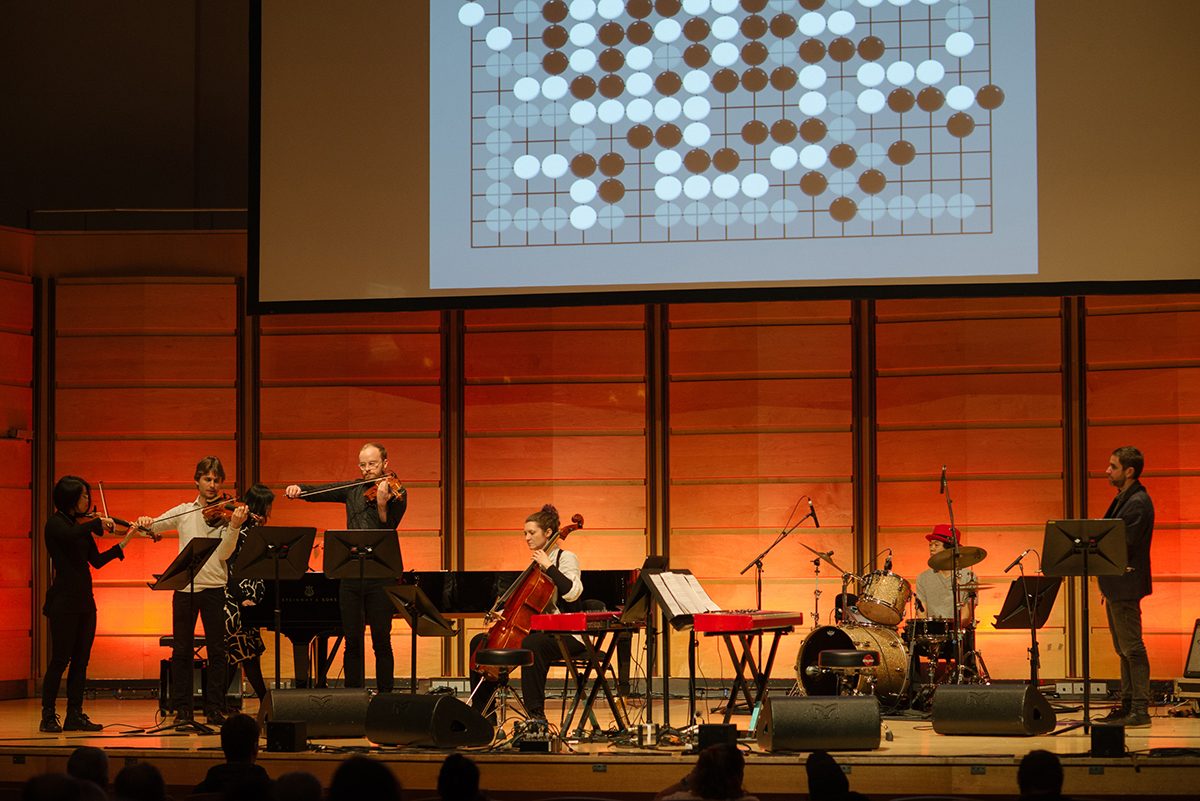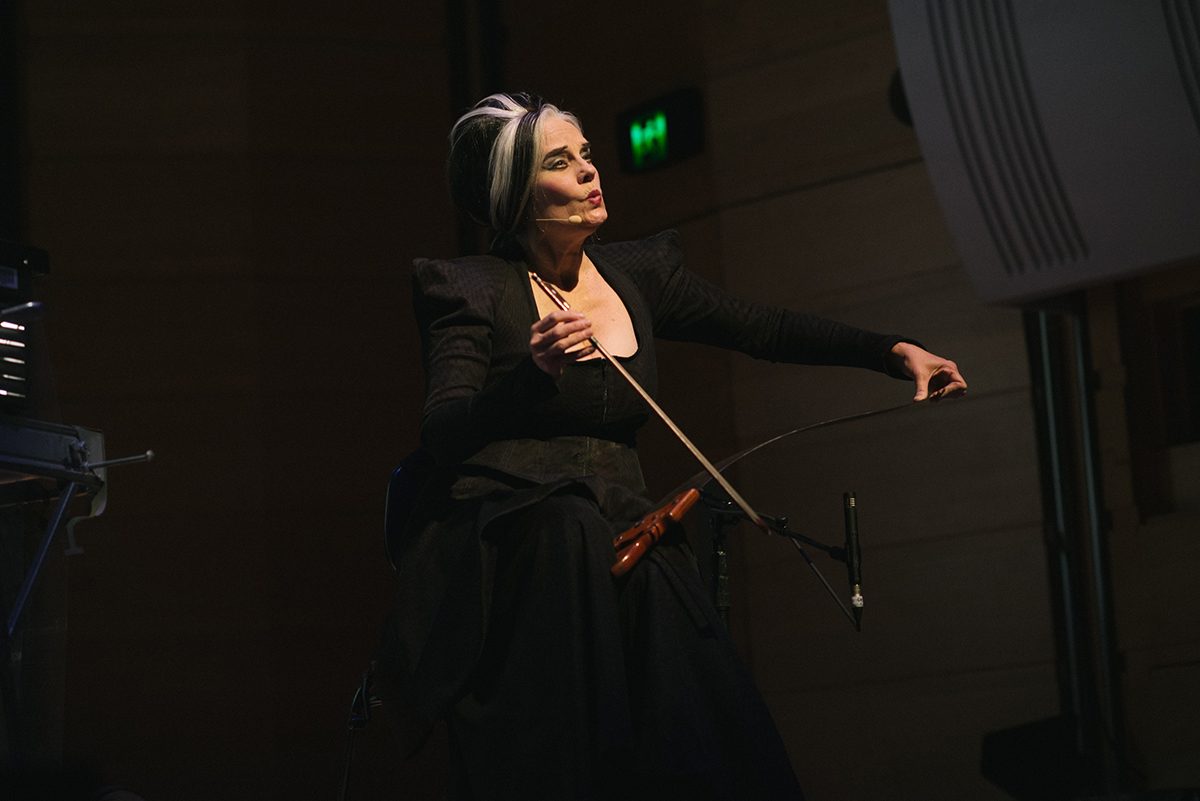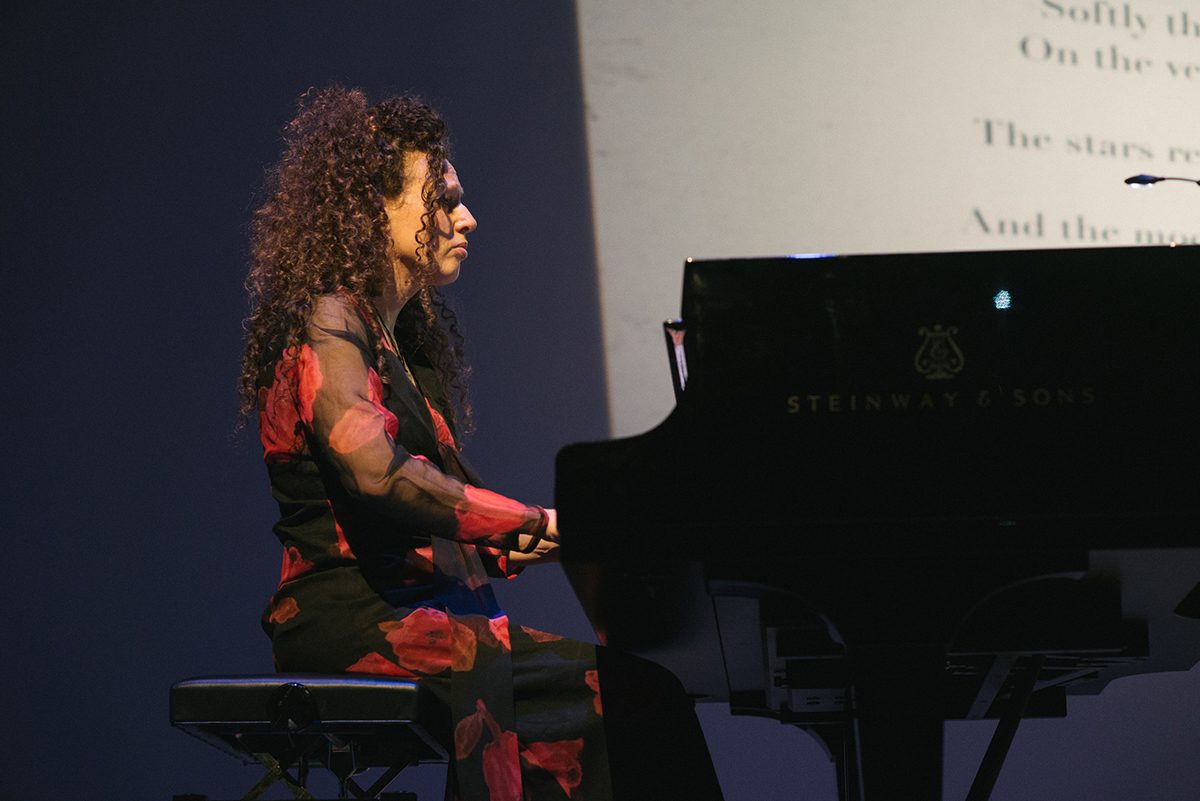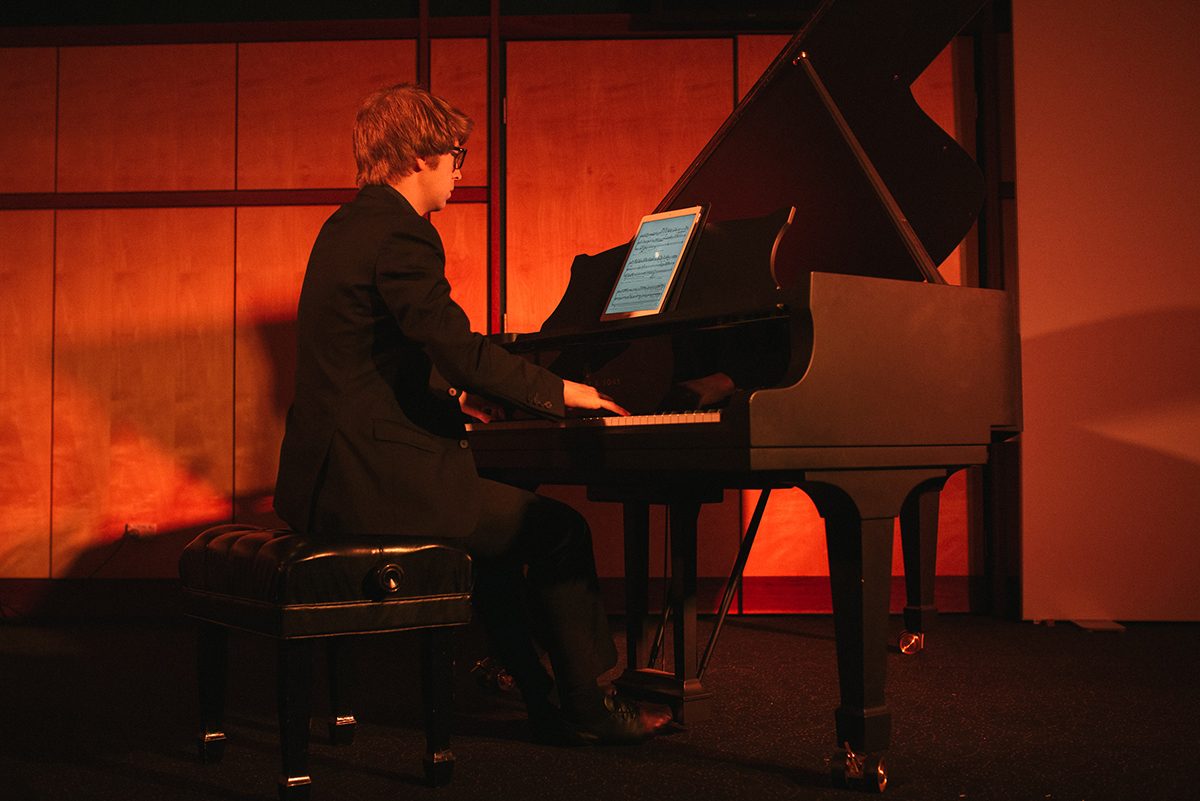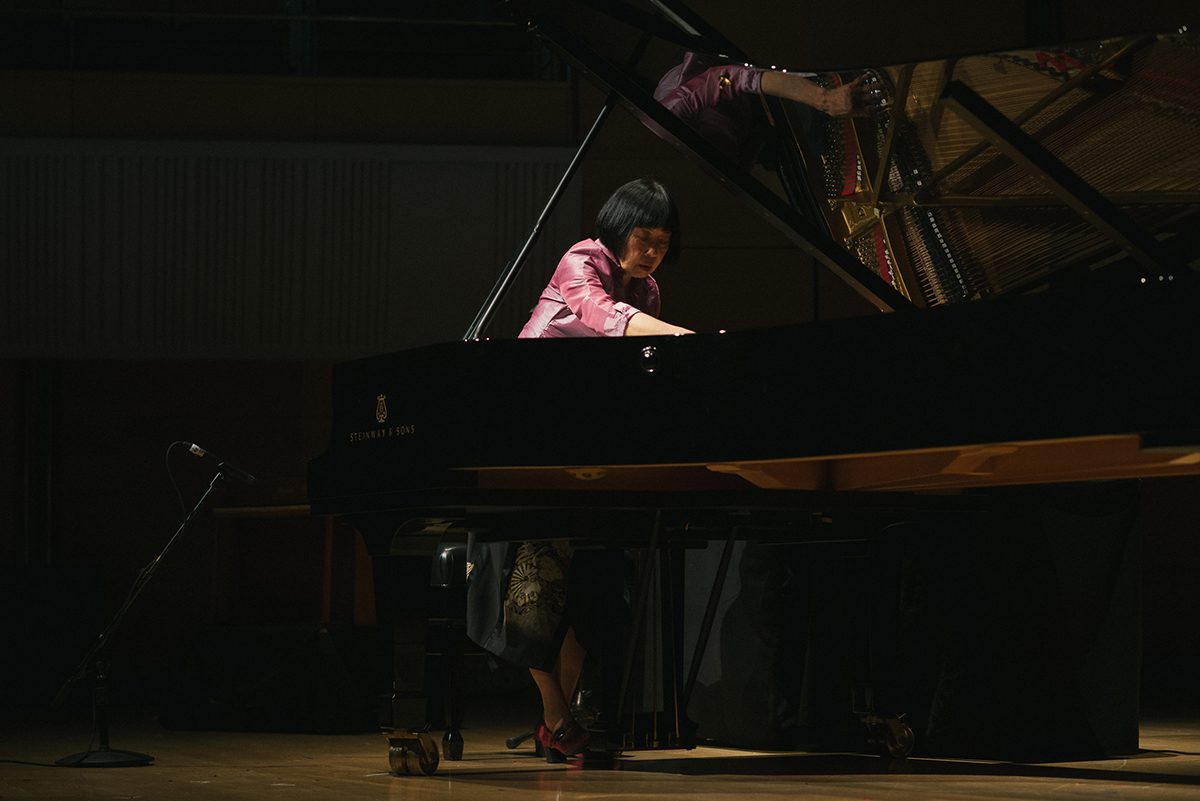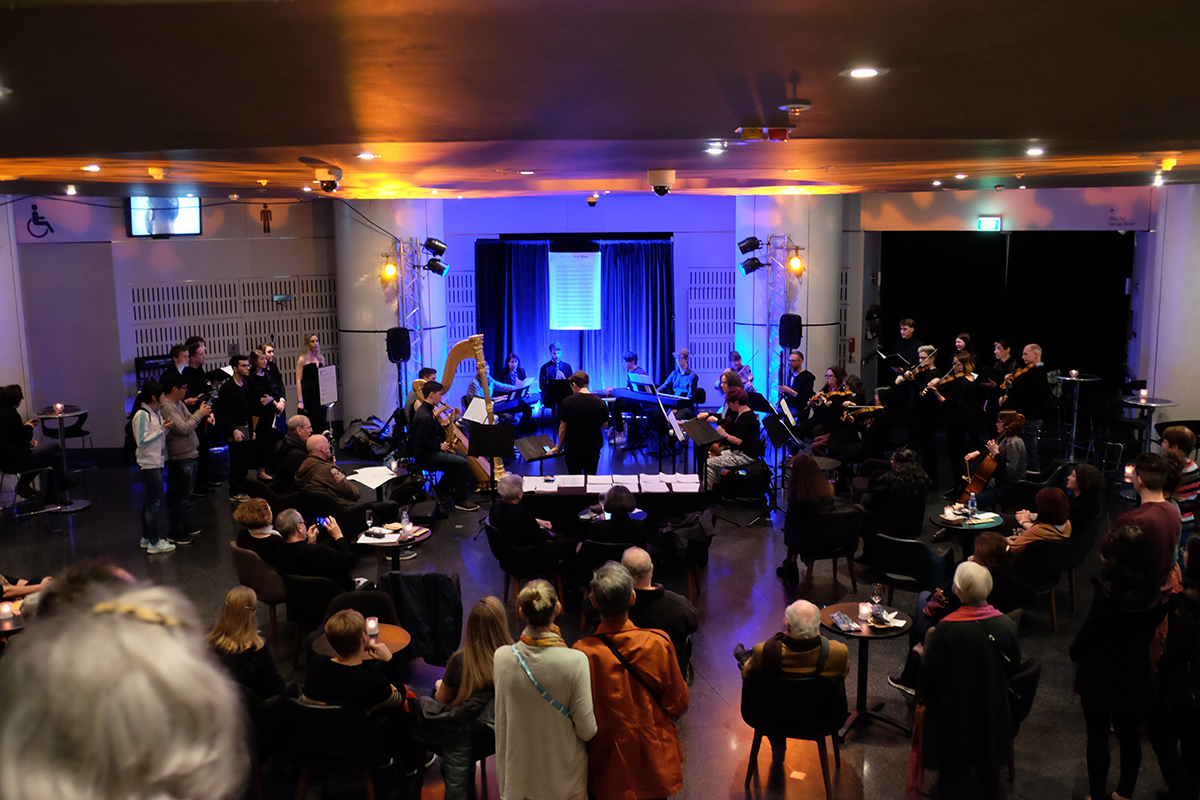
Extended Play 2019: Expansive music
To begin at the end, the body tiring, ears ringing, the mind busy. It’s around 11pm when Decibel New Music plays its final piece, Lionel Marchetti’s subtly ravishing 25-minute Inland Lake, 11 hours after the 2019 iteration of Extended Play’s new music epic commenced in Sydney’s City Recital Hall. I’m revived and inspired. As in 2018, Extended Play has again wrought its festive magic with composers and musicians from across Australia alongside Singaporean New Yorker Margaret Leng Tan, a key exponent of major works of George Crumb.
Decibel
Marchetti’s lake seems a vast salt expanse across which murmurs a deep wind, recurrently whistling like a lost soul in the French musique concrète composer’s enveloping sound world. The softly intoned utterances of the acoustic ensemble pass from cello (Tristen Parr) to viola (Aaron Wyatt) to clarinet (Lindsay Vickery) to bass flute (Cat Hope). Within an aurally complex ecosystem, including Louise Devenish’s intimately engrained percussion, each arises gently and evaporates, as if breathed. Entrancingly minimal development, including each player on chiming metal bowls, belies a steady intensification of inherent pulsing and rising pitch until an almost monstrous state of being is evoked. Not quite-Morse Code signalling is distantly heard and—in the ensuing calm—fragmented broadcasting as players wave small devices over their instruments. The cello alone, with the seemingly same bowed phrasing of the opening, plangently raises its voice before exiting, leaving the ensemble and Marchetti’s sound world with an ominously final, noteless exhalation from the flute.
The composer (at the sound desk to the rear of the auditorium) and Decibel deliver an exquisitely detailed and effectively restrained creation, an otherworldly experience born of worldly human makings and the sounds of Nature. Inland Lake was preceded by exquisite premiere performances of Leah Barclay’s all too timely Fire Atlas (with aerial video featuring forest fires) and Loren Holmes and Rosie Halsmith’s Transect (a natural landscape viewed sectionally from above), the images in each case working as a graphic score for players and audience, with each of the musicians prompted by the motion of hovering circles.
Nonsemble
Back to the beginning. At midday, my passion for cinema, not least Japanese, is indulged as Toshiro Mifune and Tatsua Nakadai in Samurai Rebellion (Masaki Kobayashi, 1967), swords drawn, face off onscreen to the engrossing two-piano (Cara Tan, Sam Mitchell) and clattering sticks electronics score of Chris Perren’s 9-minute Samurai Loops (2015) made for his impressive Brisbane-based Nonsemble. In a series of increasingly complex animations created by the composer, the characters are digitised into multi-layered cut-outs posturing in abstracted motion and then released into action, drawing us into the middle of a deep line of combatants. They move in taut correspondence with the music, highlighting and amplifying the inherent dancerliness of the warriors with dextrous visual and aural looping and a compelling not-at-all-orientalist melody.
Perren’s 30-minute Go Seigen vs Fujisawa Kuranosuke (2014) for ensemble (piano, strings, drums and electronics and composer on electric guitar), uses “the moves of the 1953 championship game of Go as stimulus for harmonic, rhythmic and melodic material” (program note). But, unlike Samurai Loops, there is no cited correlation between musical movements and actions—the actual Go game as it was played in 1953. Likewise, Jaymis Loveday’s projected images of Go stones (turning, shining, merging, constellating) and the game grid (dissolving into floating sticks) while sometimes beautiful in themselves, sometimes surplus to effect, don’t tellingly correspond with the score. As for the music, finely acquitted by Nonsemble, a shimmering, contemplative piano-led opening precedes striding minimalism—with a midway passage of minor key reflection worthy of repetition—and a subsequent movement with surging and darkly dipping glides. Perren’s minimalist-cum-rock aesthetic is most evident in the next movement (although his guitar was too recessed in the mix). A subsequent, koto-like plucking against quiet piano and plangent viola anticipates the final delicate, reflective string movement. Something has played out quite beautifully, but what? The stages of a game, its players’ changing moods? (You can hear both works on SoundCloud and see Samurai Loops on Vimeo.)
Sonya Lifschitz & and Christine Johnston
Sonya Lifschitz (piano, voice) and Christine Johnston (voice, musical saw) transform George Crumb’s still surprising 1972 work Makrokosmos Book 1, Twelve Fantasy Pieces after the Zodiac for Amplified Piano, into a witty and instructive music theatre work, the singer drolly scene-setting the 70s and beyond with reference to her childhood (‘singing’ objects with her sister), hair styles, music and politics. She then interpolates among Crumb’s movements introductions that include how to sing graphic scores and wryly performs examples of exquisite Australian birdsong including, astonishingly, the kookaburra. In her Gothic Slavic persona, Johnston (a member of The Kransky Sisters and collaborator with dancer Lisa O’Neill, among others) utilises a hand-wound overhead projector, aptly pre-digital for Crumb’s creation, a work, she declares, ahead of its time.
In a parallel universe, Lifschitz, sits at or hovers over or invades her grand piano, stroking, plucking and muting strings, uttering cries and isolated words, magnificently unleashing the full range of the thunderous keyboard and its finer capacities, generating, as Crumb intended, a cosmos beyond conventional pianism. The two universes come thrillingly together when Johnson gently echoes Lifschitz’s phrasing with exquisitely controlled vibrato saw and, elsewhere, when the performers’ voices become one. This is quite a collaboration: long may it play.
Synergy and Polymorphic Orkestra
Sydney’s Synergy invited the electroacoustic art music trio Polymorphic Orkestra to respond to the percussion ensemble’s account of leading US composer and Bang on a Can co-founder David Lang’s So Called Laws of Nature (2002), which I know from Spotify and YouTube and eagerly anticipated. Each of the three movements (rising in pitch) provides the performers with limited tools, from four woodblocks each for the first movement to, in the third, metal bars, small chimes and crotales (Lang’s original score for a cash-strapped ensemble proposed using found materials). The impression is frequently of unison within which there are delightfully mind-bending tonal and rhythmic shifts as in the first with its wavelike structure, the briefest of recurrent silences, solo ‘voices’ and sudden rippling rushes. The delicacy of the spacious, bell-like second movement is suddenly countered with each player dextrously adding cumulatively propulsive left-hand drumming, while the third movement sparkles with long high discursive notes and the eerie makings of a melody, reverberating against a relentlessly fast, vibration free ringing. It’s not exactly foot-tapping music, but I’m swept along with it, embracing the gear shifts, evolving modulations and surprises in Synergy’s excellent account of a work that looks daunting to play.
If fine in themselves, the improvised responses from Polymorphic Orkestra (trumpet, drums, vibraphone, malletKAT, audio data) at the end of the each of the first two movements (but, oddly, not the third) diminished the cogency of The So Called Laws of Nature. Thrilled by Lang’s creation, I may well have not been open to the dialogue.
So Percussion, for whom the work was written, suggest the title of the work expresses Lang’s unease with the absolutism of dogma, common sense, religion and science. It seems to be a work in which the logic of its construction is meant to unsettle any sense of a fixed order; despite the tight, close scoring, there’s a bracing restlessness, a never quite resolvable dialectic admirably captured by Synergy.
Alex Waite
Squeezing into a crowded studio space, I caught the tail-end of Alex Waite’s account of Tristan Murail’s haunting La Mandragore (The Mandrake, 1993). Amid the many comings and goings at the rear of the room of an audience uncertain of its tastes in new music, I focused hard on Thomas Adès’ Traced Overhead (1996) which, in its first movement, commences as if a continuation of the Murail, with a liquid juxtaposing of restless high and reverberant low notes, and then becoming overtly lyrical, dramatic and expansively multi-voiced. Waite lucidly captures the work’s sometimes hesitant, sometimes striving aspiration; Adès was apparently inspired by the columns of light depicted in sacred paintings.
Liza Lim too took her cue from painting, one by abstract expressionist Cy Twomby (“My line is childlike but not childish,” he reputedly said of his art) for her The Four Seasons (2009). If engaged moment by moment (when not distracted by a couple of picnickers to the front of me) by Waite’s delicately precise realisation of the work’s almost stream-of-consciousness open-endedness (an aural equivalent to Twombly’s diffuse markings), I struggled to grasp the whole, with its rapid mood shifts, against which Murail and Adès felt quite neat. Subsequent listening to the work on Soundcloud, as played by its first performer Marilyn Nonken, has granted me better sense of the work’s cogency, but equally confirmed that the composition’s demanding emotional restlessness, Lim’s self-described “climates of feeling,” is its great strength.
Lim writes that she was inspired “in particular [by Twombly’s] massive four-panelled work Quattro Stagioni [Four Seasons]. The combination of ecstatic saturated colour, linear calligraphic dynamism and paint washes veiling poetic commentaries scrawled on canvas, gave me many ideas for a piano cycle in four parts. These ‘seasons’ are seasons of an inner life—they are made up of ‘climates of feeling’—weather patterns that are sometimes extravagantly baroque in expression or shot through with an elegaic sense of the passage of time opening out to a ceremonial dance: a Sema or the Sufi’s meditative whirling dance of union.” In Alex Waite’s hands, that dance at the work’s end ripples, sparkles and chimes, all the while as if suspended, beyond time.
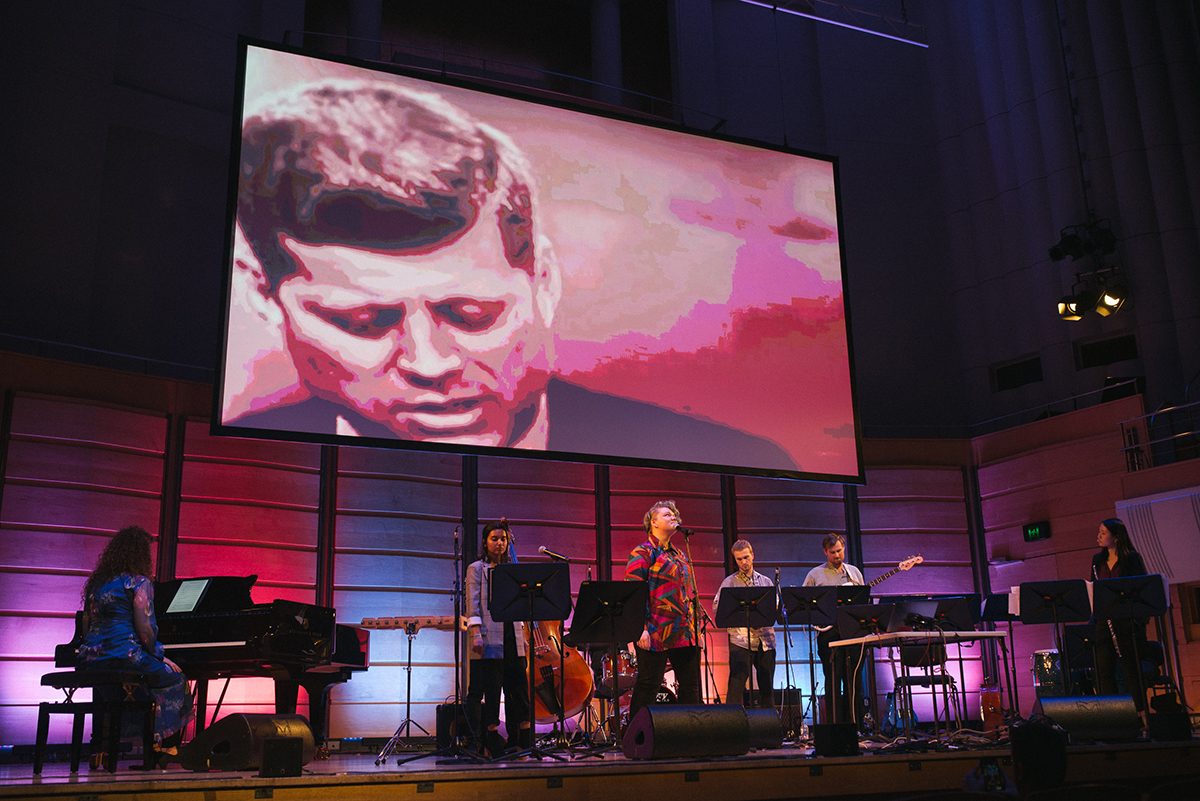
UNSW New Music Collective, Speech Music: JFK secret phone call (Cuban Missile Crisis), Extended Play, photo Katelyn-Jane Dunn
UNSW New Music Collective
UNSW students lead by their teacher Dr Sonya Lifschitz vigorously embraced us with Louis Andriessen’s rousing if famously difficult Workers Union (1975), a rhythmically but not tonally prescribed work for any number and kinds of instruments, in this case flute, double bass, electric bass, voices, saxophone, electric bass, piano and percussion. The performance exuded commitment, wit and power. Erik Griswold’s Action Music II (2017), also open to any number of musicians and rhythmically taut but variously melodic, proved an agile companion to the Andriessen. The projected, partly notated score glowed with paint splashes inviting the players to choose their means of interpretation and to respond to instructions such as “with a sense of existential dread,” “irritated,” “furious,” “ambivalent” and, finally, “over the top.” From a burbling, growling opening to squealing upglides, staccato strides, rock band drive and jazzy lugubriousness the work alternated between moments of beauty and anxiety and sax-driven (Alistair Johnson) passion.
Electric bassist Luke Gerber took to the electric guitar for Steve Reich’s Electric Counterpoint (1987), a rewardingly demanding work composed for Pat Metheny playing to an ‘ensemble’ of multi-layered, pre-recorded guitar tracks. Jonny Greenwood is the latest of a number of interpreters (on the Radio Rewrite CD and live at Glastonbury in 2014), bringing to the work a sharper-edged, less a consciously melodic imperative; Gerber, a fan, played to the Radiohead guitarist’s ensemble fusing playful ease with excellent execution (though there’s no denying the sway of Metheny’s influence on the composer in the glorious, fast third movement).
The concert also included three all too evanescent, whimsical duets for voice and instrument by Brisbane composer Robert Davidson and several of his famed minimalist musical and visual cut-ups, the best of which is his account of Prime Minister Julia Gillard’s “Not Now, Not Ever!” (2014) riposte to Tony Abbott’s misogyny, powerfully performed by the UNSW New Music Collective which proved to be a fine addition, instrumentally and vocally (Kit Spencer especially), to Extended Play’s dextrous programming.
Margaret Leng Tan
The leading global exponent of the toy piano as an instrument for adult play and composition opened her extensive program with some nine short works, childlike, ironic and fantastical and deploying, here and there, whistles, wind-up toys and a jack-in-the-box (determining performance duration). The sublime An American in Buenos Aires (Blues Tango) (2002) by US composer Toby Twining combined softly striding grand piano (left hand) and glittering toy piano (right hand). The Australian contribution to Tan’s international repertoire came from Erik Griswold with two pieces from his Old MacDonald’s Yellow Submarine (2004), first Chooks with its rapid woodblock pecking and then the wickedly demanding Bicycle Lee Hooker, with whistle, hooter, bike bell and rolling John Lee Hooker-style boogie blues on the tiny keyboard, both realised with amused aplomb.
Re-enter cosmologist George Crumb, this time with Metamorphoses Book 1, Ten Fantasy Pieces after celebrated paintings, for amplified piano, toy piano, auxilliary percussion and voice (2017) written for Margaret Leng Tan. These fantasies are personal responses to the paintings, but correlations between image and sound are easily made when the paintings are screened above Tan and her piano; none, bar Jasper Johns’ Perilous Night (and even here stick figures cavort near the bottom of the frame), are simply abstract; we see faces, figures, landscapes, Klee’s goldfish, Van Gogh’s crows, Chagall’s clowns, Kandinsky’s Blue Rider. Tan plays, sings, groans and whistles, ducks under the piano’s lid to stroke and strike the strings, crawls beneath the instrument to make pedal adjustments and works the toy piano. It’s incredibly labour-intensive playing.
Paul Klee’s Black Prince oscillates between dark turbulence and calm; the artist’s Goldfish is still, but on the keyboard moves with sparkling energy. Van Gogh’s crows (Wheatfield with Crows), on the other hand, have little sense of sudden flight; rather, with Tan’s voicing plangent cawing against softly brushed strings, there’s a sense of uneasy night-time recollection rendered in spare pluckings and odd flashing notes. Chagall’s The Fiddler has a lilting folk melody rising to a dance, while Clowns at Night spookily juxtaposes toy piano, the deep end of the grand, Tan’s ghostly cries, windchimes and woodblocks within the body of the piano. Paul Gauguin’s Contes Barbares (Against Barbarians), depicting two Polynesian women and a demonic white male, evokes a dark, pulsing ritual with Tan uttering recurrent indigenous phrases and rattling sticks before driving the piano into a grand, if uncertain melody (perhaps, like the painting, casting doubt on Gaugin’s dream of an uncorrupted South Pacific).
For Dali’s The Persistence of Memory with its melting timepieces, Tan whispers and bends strings. For Kandinsky’s The Blue Rider (the image associated by the artist with aesthetic revolution and also the title of the group of Munich-based like-minded artists), initially hesitant, the music quickly rises to a questing gallop, stormy string flashes and thundering bass clusters that envelop the whole instrument, with Tan hammering keys and simultaneously assaulting strings. Revolution accomplished. Tan’s sustained performance unleashes a grand nocturne, an enveloping night world, of dreams and nightmares, fears and wish fulfillments triggered by the imaginings realised in great paintings.
Like Marchetti’s Inland Lake, later this night, Crumb’s Metamorphoses works wonders, musically and on the imagination in the tradition of some of Modernism’s 20th century beginnings—the synaesthesia felt between music and visual art by Kandinsky, his Blue Rider companions and Schoenberg, painter and composer, who exhibited with them. Crumb himself attributes an earlier influence, Modest Mussorgsky for the “invention of the idea of transforming visual art into sound in his Pictures at an Exhibition. [Metamorphoses is] a direct descendent of Mussorgsky’s hauntingly beautiful piano composition.” It’s a reminder of Crumb’s radicalising of a Romantic legacy.
At the end…
At the end of Extended Play, I looked back on an extremely generous program, grateful for its celebration of George Crumb (he’ll be 90 in October and is still composing) with major works brilliantly realised by Sonya Lifschitz and Margaret Leng Tan, and for its confirmation of the excellence of adventurous ensembles—Decibel (WA), Synergy (NSW), Nonsemble (QLD) and a welcome student group, the UNSW New Music Collective. Hard choices and some schedule delays meant that I missed Adelaide’s Zephyr Quartet (who impressed at Ensemble Offspring’s Kontiki Racket in June), Perth’s Intercurrent, Sydney’s Kammerklang and Brisbane’s The Australian Voices.
For seven of the 12 hours of Extended Play, a performance (building cumulatively in musician numbers) of Terry Riley’s In C was realised on the ground floor of City Recital Hall, pleasingly resonating in the upper foyers. Again, Extended Play has proven itself an invaluable champion of international and Australian new music, generating a heightened sense of community across Australia and beyond, between composers, musicians and a passionate audience. Thanks to Extended Play and to Ensemble Offspring’s excellent new music micro-festival Kontiki Racket (held over two days in June this year) new music is granted the standing it deserves in a challenging market.
My review of the 2018 Extended Play focused on performances by Lisa Moore, Bang on a Can All Stars, Elision, Ensemble Offspring, Topology and Gabriella Smart.
–
Extended Play, co-produced/curated by City Recital Hall and Lyle Chan & Vexations 840; City Recital Hall, Sydney, 31 Aug, 2019
Top image credit: Terry Riley’s In C, photo Krista Tanuwibawa


